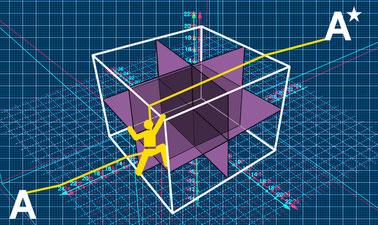MOOC List is learner-supported. When you buy through links on our site, we may earn an affiliate commission.

MOOC List is learner-supported. When you buy through links on our site, we may earn an affiliate commission.
These skills include:
- Fluency – selecting and applying correct methods to answer with speed and efficiency
- Confidence – critically assessing mathematical methods and investigating ways to apply them
- Problem solving – analysing the ‘unfamiliar’ and identifying which skills and techniques you require to answer questions
- Constructing mathematical argument – using mathematical tools such as diagrams, graphs, logical deduction, mathematical symbols, mathematical language, construct mathematical argument and present precisely to others
- Deep reasoning – analysing and critiquing mathematical techniques, arguments, formulae and proofs to comprehend how they can be applied
Over eight modules, you will be introduced:
- The determinant and inverse of a 3 x 3 matrix
- Mathematical induction
- Differentiation and integration methods and some of their applications
- Maclaurin series
- DeMoivre’s Theorem for complex numbers and their applications
- Polar coordinates and sketching polar curves
- Hyperbolic functions
Your initial skillset will be extended to give a clear understanding of how background knowledge underpins the A-level further mathematics course. You’ll also, be encouraged to consider how what you know fits into the wider mathematical world.
What you'll learn
- How to find the determinant of a complex number without using a calculator and interpret the result geometrically.
- How to use properties of matrix determinants to simplify finding a determinant and to factorise determinants.
- How to use a 3 x 3 matrix to apply a transformation in three dimensions
- How to find the inverse of a 3 x 3 matrix without using a calculator.
- How to prove series results using mathematical induction.
- How to prove divisibility by mathematical induction.
- How to prove matrix results by using mathematical induction.
- How to use the chain, product and quotient rules for differentiation.
- How to differentiate and integrate reciprocal and inverse trigonometric functions.
- How to integrate by inspection.
- How to use trigonometric identities to integrate.
-How to use integration methods to find volumes of revolution.
- How to use integration methods to find the mean of a function.
- How to express functions as polynomial series.
- How to find a Maclaurin series.
- How to use standard Maclaurin series to define related series.
- How to use De Moivre’s Theorem.
- How to use polar coordinates to define a position in two dimensional space.
- How to sketch the graphs of functions using polar coordinates.
- How to define the hyperbolic sine and cosine of a value.
- How to sketch graphs of hyperbolic functions.
- How to differentiate and integrate hyperbolic functions.
Syllabus
Module 1
Matrices - The determinant and inverse of a 3 x 3 matrix
Moving in to three dimensions
Conventions for matrices in 3D
The determinant of a 3 x 3 matrix and its geometrical interpretation
Determinant properties
Factorising a determinant
Transformations using 3 x 3 matrices
The inverse of a 3 x 3 matrix
Module 2
Mathematical induction
The principle behind mathematical induction and the structure of proof by induction
Mathematical induction and series
Proving divisibility by induction
Proving matrix results by induction
Module 3
Further differentiation and integration
The chain rule
The product rule and the quotient rule
Differentiation of reciprocal and inverse trigonometric functions
Integrating trigonometric functions
Integrating functions that lead to inverse trigonometric integrals
Integration by inspection
Integration using trigonometric identities
Module 4
Applications of Integration
Volumes of revolution
The mean of a function
Module 5
An Introduction to Maclaurin series
Expressing functions as polynomial series from first principles
Maclaurin series
Adapting standard Maclaurin series
Module 6
Complex Numbers: De Moivre's Theorem and exponential form
De Moivre's theorem and it's proof
Using de Moivre’s Theorem to establish trigonometrical results
De Moivre’s Theorem and complex exponents
Module 7
An introduction to polar coordinates
Defining position using polar coordinates
Sketching polar curves
Cartesian to polar form and polar to Cartesian form
Module 8
Hyperbolic functions
Defining hyperbolic functions
Graphs of hyperbolic functions
Calculations with hyperbolic functions
Inverse hyperbolic functions
* Differentiating and integrating hyperbolic functions
MOOC List is learner-supported. When you buy through links on our site, we may earn an affiliate commission.
MOOC List is learner-supported. When you buy through links on our site, we may earn an affiliate commission.
